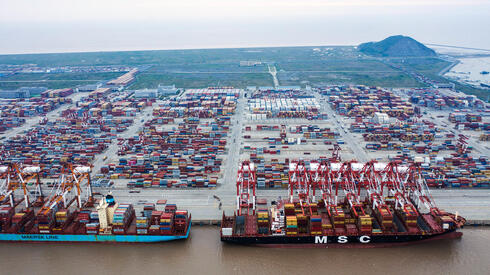
Shipping crisis hits consumers hard as China's trade surplus creates bottlenecks
Rising costs and container shortages spell trouble for holiday shopping and global supply chains.
China may not be able to export its problems, but it is certainly working in that direction and exerting significant pressure on the maritime transport market, which is already under high demand. The result is a surge in shipping prices, a severe shortage of containers, and record profits for shipping companies. Drawing from a similar crisis during the global COVID-19 pandemic, it can be anticipated that consumers will ultimately bear the brunt of these increased costs, with the peak likely to occur during the holiday shopping season.
In the past year, additional pressures have emerged. The first of these is the crisis in the Red Sea following the conflict in Gaza, caused by attacks from the Yemeni organization Ansar Allah (known as the Houthis). The constant threat to ships in the Red Sea has led to 90% of vessel traffic in the region being diverted to longer trade routes towards Europe, around the Cape of Good Hope. This route adds nine to 14 days to sailing times. DHL warned of a bottleneck in containers back in January due to these extended routes. This not only disrupts delivery times but also harms the entire supply chain, as containers spend more time at sea and are not available for reloading. The difficulty of producing additional containers to compensate for shortages has resulted in a container crisis in recent months.
As if the situation weren't already complex enough, harsh climate conditions in Asia, particularly in ports in China, Singapore, and Malaysia, further extend shipping times. In Panama, the situation is particularly dire; droughts and a drop in water levels have forced local authorities to reduce the number of daily crossings between the Atlantic and Pacific oceans and to limit the maximum depth at which ships' hulls are submerged, necessitating a reduction in the amount of cargo loaded onto ships. According to the Norwegian data analysis company Xeneta, these constraints in Panama alone have doubled the spot rates for a 40-foot container to $5,584 on the route between Asia and the East Coast of the United States.
China has exacerbated the situation by flooding the market with exports. In the first half of the year, China’s foreign trade reached $2.98 trillion, an annual increase of 2.9% in dollar terms, creating a trade surplus of $435 billion, an annual increase of 8.6%. This growth, while seemingly a sign of China’s solid performance in the complex world of trade, actually highlights the government’s failure to boost domestic consumption. Estimates suggest that the trade surplus also reflects expectations that political tensions with the United States will result in more barriers and tariffs on Chinese manufacturers, prompting a rush to export as much as possible.
The influx of Chinese products puts additional pressure on daily shipping volumes and global ports, which must handle an intense flow of containers. For example, last June saw the highest volume of containers shipped from China to Europe compared to previous years. June was also the eighth largest month in terms of volume ever, trailing only the extremely high shipment volumes seen during the pandemic at the end of 2020 and in 2021.
This dynamic drives up sea freight prices. According to Xeneta, since last October, the cost of moving a 40-foot container from China to the West Coast and East Coast of the United States has climbed by 144% and 139%, respectively, between April 30 and July 1. During that period, shipping costs from China to Northern Europe jumped by 166%.
Related articles:
These high prices translate into substantial profits for shipping companies. For example, in the second quarter of this year, Israel's Zim recorded revenues of $1.9 billion and a net profit of $373 million—far exceeding forecasts. In June, Danish shipping giant Maersk and Germany's Hapag-Lloyd raised their profit forecasts for the current year. For Maersk—the second-largest shipping company in the world—this was the second update this year, and it now expects to record an operating profit of $1-3 billion, compared to an earlier forecast of a potential loss of up to $5 billion. FedEx also posted better-than-expected profits, attributing part of the excess performance to the shipping crisis. Shares of shipping companies Global Ship Lease, Danaos, and Ardmore are currently trading at all-time highs.
Ultimately, the high profits of transport companies are passed on to consumers. During the pandemic, the surge in shipping costs was cited by the Federal Reserve as a significant factor in the highest inflation the United States had seen in 40 years.
As these effects are reflected in global inflation rates, traders are already planning for the Christmas season. Last June, Maersk CEO Vincent Clerc warned that the market was facing unusual load conditions. Many began importing goods for Christmas as early as May. "They spent much more than they wanted, but they thought it was a price worth paying to reduce the level of risk in the supply chain," he concluded.
